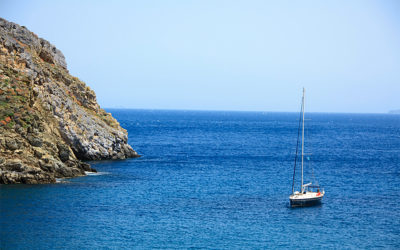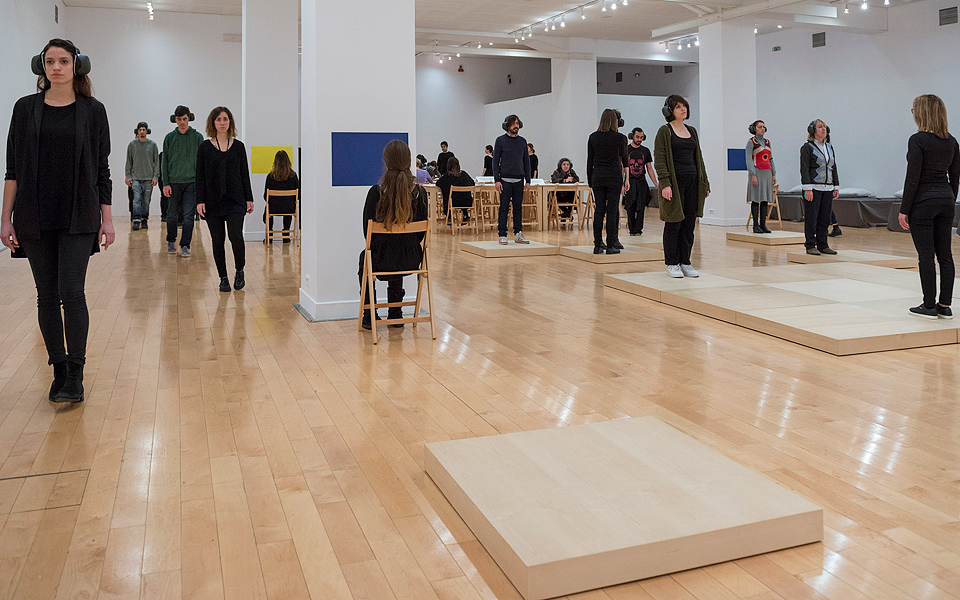
Life
Inside Ourselves Through the Abramovic Method
A first-time encounter with performance art through the exercises designed by the Serbian artist.
“We live in a world of constant distraction, where taking the time to connect to ourselves is becoming more and more difficult. I have designed this experience to give the public the opportunity to be free from these distractions and to be connected with themselves, with each other, and with the present moment.” [Marina Abramovic]
A long queue begins to form outside the ground floor level at the Benaki Museum where the Abramovic method can be experienced. It’s Saturday afternoon so the crowd is not surprising. Still, I’m surprised by the amalgam of ages and types. I had not realized performance art was such a hit among such a wide range of the Greek public – unless they are just curious, like me. After a wait of some 20 minutes, a section of the queue is allowed to enter. Volunteers dressed in black show us the way and give us instructions. We have to leave all our possessions in a locker and then proceed through various rooms, where other volunteers have been trained to awaken our senses and bring us close to our center through a series of breathing and relaxation exercises – similar to those of yoga.
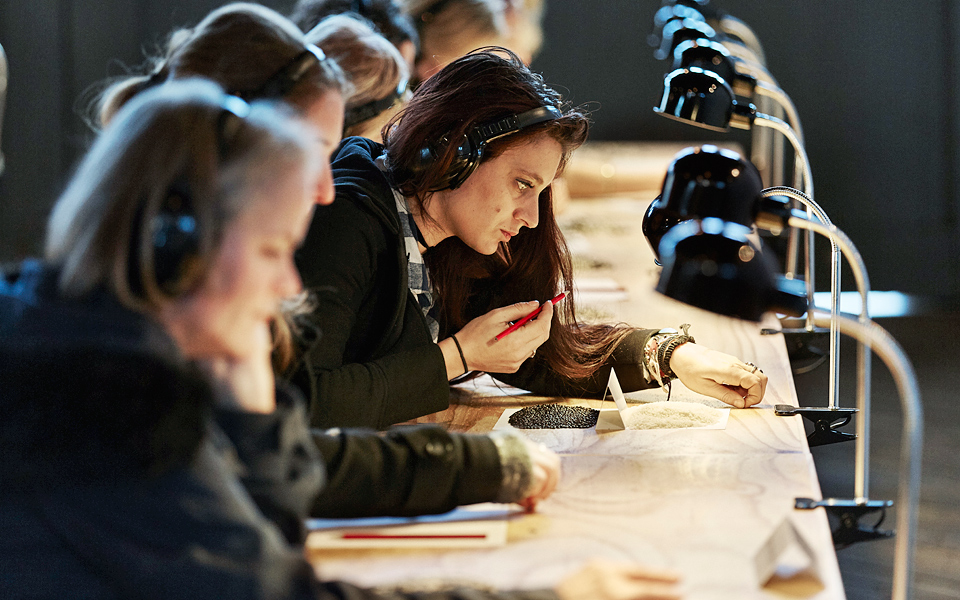
After the warm up, we enter a reception area where we are given a set of headphones that will completely isolate us from all external sounds and hopefully help us hear our inner voices instead. From there on we are not allowed to talk. I’m led to the communal workshop space, which looks like an experiment room out of some futuristic film. On three rows of tables, participants sit and count lentils and rice. The other participants are scattered around the room, alien looking with their huge headphones, trying to find their center and experience the here and now through a series of activities: slow-motion walking, taking a nap on one of a series of bunk beds, staring into a piece of colored cardboard, moving in space blindfolded, or staring into the eyes of strangers.
I’m shown to a pedestal and instructed to close my eyes. After about five minutes I’m beginning to wonder what I’m supposed to do next. I tentatively open my eyes to see what’s happening around me. I decide there are probably no rules, so I step off the pedestal and head for the lentils. I begin to count, making small piles of 20 lentils per pile, but I soon realize it’s hopeless to spend forever counting lentils. So, after 25 piles I decide to move on. I steal sidelong glances, wondering how others are approaching the task. They all seem so concentrated. Some are very diligent, like accountants. Others are more creative. I catch a glimpse of an old lady in her 80s, sitting next to a long-bearded hipster guy. I’m enjoying this bizarre coexistence.
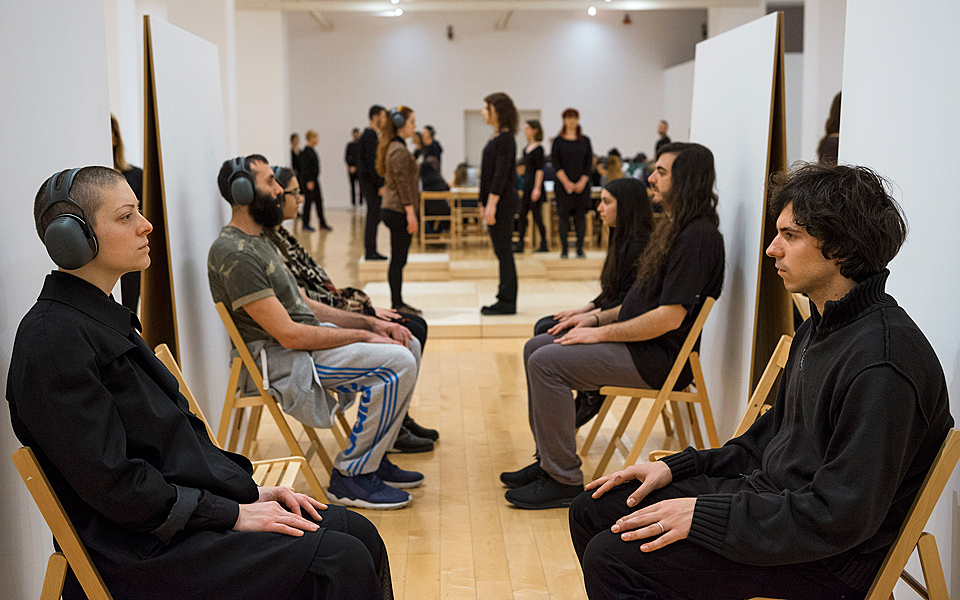
Enough lentils. What to do next? Maybe take a nap. Counting lentils was exhausting. I get under the sheets and close my eyes. No sound to annoy me, so I manage to drift off for a while. I like it in here, but I’m on a schedule. I want to attend Abramovic’s lecture at six and since I have no watch I have to trust my internal subjective clock. I get out of bed, tidy up and decide to stare at a piece of yellow cardboard. Impossible to concentrate on that. I’m distracted by those around me. I stand up and go for a refreshing walk. Only this is a very slow motion one. I try to imitate the speed of one of the volunteers who is demonstrating the tempo. I’m thinking about how trained we are in life to always have a goal, to get somewhere, in this case from one side of the room to the other. We see walking as an action that is supposed to get us somewhere, not something to be enjoyed in and of itself. That’s what Abramovic is trying to have us do; focus on one thing at a time in the present, to walk for the sake of walking. I’m pondering all these things and yet I cannot imitate the volunteer’s tempo, so eventually I overcome her.
I now enter a section of the room where I’m supposed to stare into a stranger’s eyes. I sit down across a young guy. This is difficult. I switch back and forth between embarrassed and serious. He’s much better at this than I. I often look away. What is more difficult, though? Staring or being stared at? I don’t make it for more than three minutes but it feels longer. I take a small bow as a thank you and move on to the final task.
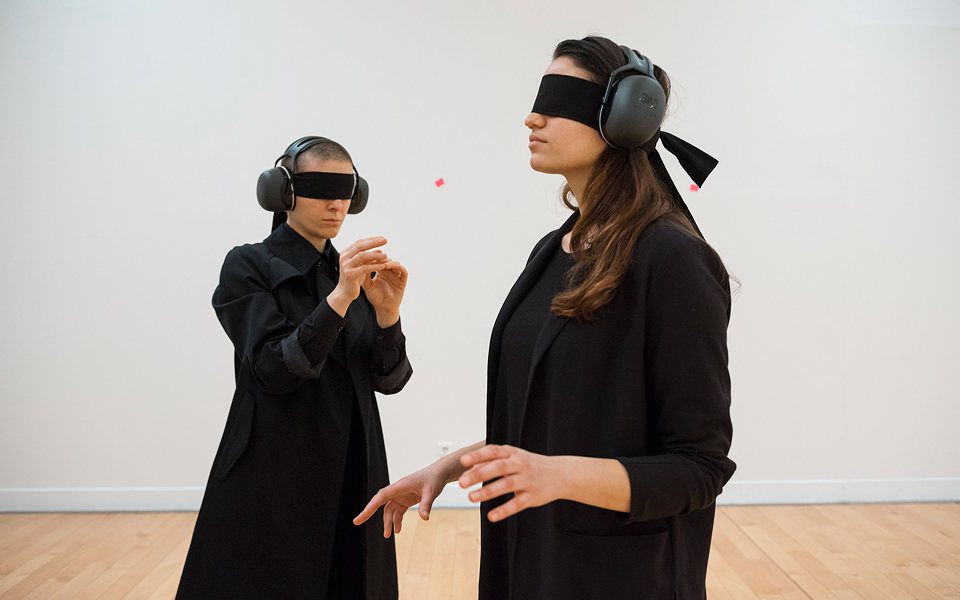
I’m instructed to take off my headphones. I’m given a black cloth to blindfold myself and told that if I want to stop I can raise my hand and someone will come and pick me up. So I blindfold myself, put my headphones back on, and off I go swimming into the darkness. I dedicate quite a considerable amount of time to this task. I’m enjoying it. Bumping into people, touching strangers, holding their hands as a sign of recognition, smelling their perfumes, trying to establish the boundaries of the space. This is also the most touching experience for me. I’m thinking that darkness is equalizing. There are no genders, ages or classes here. We are all just members of the human race, crashing into one another, reaching out, trying to make sense of the world. I could have stayed here longer, but I raise my hand. Someone comes for me. I’m taken by the arm like a blind person. Coming to terms with our vulnerability and accepting a stranger’s help is kind of touching. When I take off my blindfold, I’m a little teary.
The Abramovic Method is part of As One, a six-week program (10 March–24 April) hosted at the Benaki Museum and co-organized by the Neon contemporary art organization and the Marina Abramovic Institute. The program includes original, long durational performances and performance interventions by 24 Greek and five international artists, two re-performances of Abramovic’s works by Greek artists, screenings, lectures and workshops. The exercises of the method were designed by Abramovic over the course of 40 years to explore and push the boundaries of body and mind while connecting participants with their own selves and with those around them. The goal is to engage and inspire the participants, while at the same time promoting performance art.



